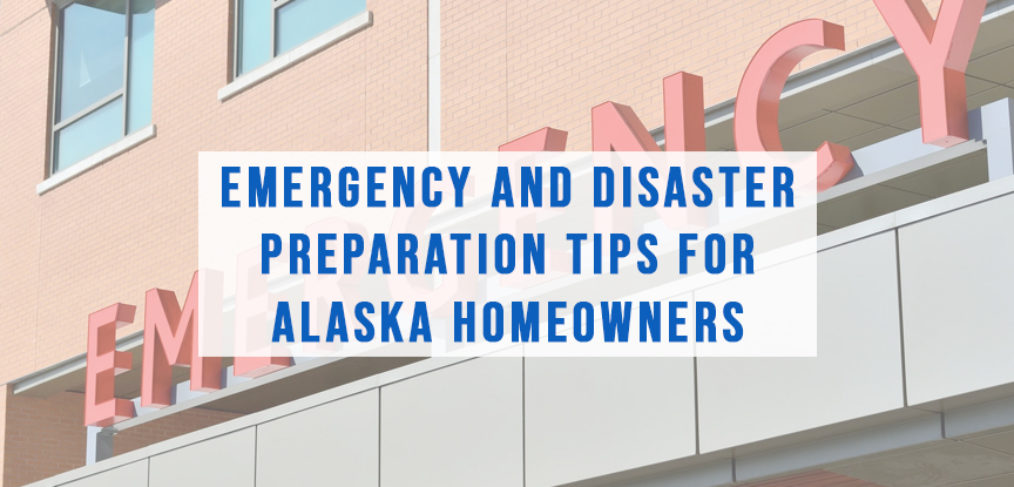
Emergency and Disaster Preparation Tips for Alaska Homes
Turn on the TV and you’ll see how important it is to be ready for emergency situations. Whether it’s a wildfire, earthquake, tsunami or even something like a nuclear threat, being prepared is critical – especially here in Alaska.
Disasters happen quickly and without warning. You may be asked to evacuate, or you might be required to stay in your home for an extended period of time. That’s why it’s important to plan ahead so you can be ready if and when something happens. Here are a few ways homeowners in Alaska can start now with emergency and disaster preparation.
Food and water
Keep non-perishable food and water supplies stocked up at home, work and in your car at all times. Water, especially, is important. And don’t forget things like can openers, dishes, and ways to prepare food if needed.
Emergency kits
Assemble emergency kits that include basic medicines, baby supplies like formula and diapers, pet food, and extra clothing for all seasons. Other items to add include batteries, flashlights, lanterns, radios, blankets, and first aid supplies. Check the Red Cross website for printable checklists you can use to assemble kits for your car, home and work.
Car emergency kits
Assemble a car emergency bag with the following items:
- Extreme-cold rated sleeping bag / blankets
- Hand warmers / gloves
- Flares
- Extra coat, socks, shoes
- Flashlight
- Shovel
- Extra-long jumper cables
- First-aid kit
- Tow straps
- Non-perishable food and water
- Tire chains
Personal family emergency plan
Part of being prepared involves having a plan. Discuss and plan for likely scenarios in your area (blizzards, freezing temperatures, earthquake, tsunami, etc.) For each one, form a basic plan of what your family will do, assigning duties to each member of the family, and outlining actions to take.
Designate places to meet in case you can’t return to your home. And have a plan for communicating with each other (see more on that below). Plan for your pets. Also take into account babies, young children, seniors and people with special needs. Write down your plan, give each member a copy that includes their individual duties, and make it part of your emergency supply kit.
The Alaska Division of Homeland Security & Emergency Management website is filled with useful information, resources and printable checklists to help Alaskan citizens be prepared for and survive just about everything.
Emergency and disaster preparation communication
Have a plan for communicating during an emergency. If cell networks are overloaded, texts, emails or even social media posts can get through when calls cannot. Another quirk of cell networks during emergencies is that long-distance calls can often go through when local ones do not. Ask an out-of-town friend or family member to help with communication for family members that are separated.
While the wildfires in California and hurricanes in Florida are a long way away from Alaska, one universal lesson we can all learn from watching their stories unfold is the value of being prepared when disaster strikes. If you’re new to the area, we hope these ideas help you get started with your own emergency and disaster preparation plans and invite you to reach out to us with any questions about living in the Anchorage, Eagle River, and Wasilla communities.


